The Remarkable Journey of Bird Migration with Mike Blom
A conversation with Mike Blom on studying migratory patterns of birds and his lifelong connection to the Snowy Owl.
This past October, my mom and I made the 3-hour drive to Redberry Lake Biosphere to participate in migratory research of Saw Whet Owls. As the daylight folded over the edges of the lake’s horizon, we gathered around a large bonfire to share a meal and waited in hushed anticipation for the owls to fly through the trees as they embarked on their annual migratory passage.
Eventually, a group of three Saw Whet Owls graced our presence. We poured in through the door of the banding station and watched as our instructor scooped the first owl out of a small black cloth bag. We were hoodwinked with joy at the sight of this darling creature staring back at us with its moonbeam eyes. One woman burst into tears.
There is a sacredness to seeing a wild animal up close for the first time. Mike Blom, our instructor & birding specialist at Redberry Lake, knows this experience intimately. He has spent the past 20 years catching and studying birds for migratory research, a practice that requires hours of waiting in stillness and silence for the chance to hold some of the most ferocious yet magnificent birds in his hands before releasing them back to the sky.
Ash Kilback: How did the landscape of your childhood influence your relationship to nature?
Mike Blom: I grew up in Dalmeny, a small town just outside the city of Saskatoon. Living on the rural prairies as a kid, your imagination is always running wild and you’re looking for creative ways to do things. I was a curious child who wanted to know how nature worked so my buddy Mark and I would climb trees to look inside bird nests.
I remember climbing up this spruce tree once and seeing a nest bowl lined with mud, cow and horse hair. It was surrounded by this big ball of intricate twigs and had a small entrance hole for the birds to go in and out of. Eventually, I started to catch crows and magpies and I'd take them out of their nests and raise them the way other kids would care for a salamander or a frog. Birds are something I naturally gravitated towards as a kid.
AK: What is one of your earliest memories of a bird that you’ve carried with you throughout your life?
MB: When I was in Elementary School, we rode the bus into Saskatoon to go to French Immersion. In the winter time, we had to blow on the windows or rub them with our hands because their was so much frost. One day, I remember looking out the bus window and seeing a Snowy Owl sitting on a pole. I was completely captivated and mesmerized by this owl. I wondered how a bird could be so comfortable in a cold climate, the way it seemed to be resting peacefully on the pole. After that experience, I was excited to ride the bus every day with the hope of seeing another snowy owl. It was like my Harry Potter moment, I just knew that the Snowy Owl was my bird. That image of seeing it for the first time will always be ingrained in my memory.
AK: How did you get introduced to the work of banding birds for migratory research?
MB: In 2003, I got on with Ducks Unlimited for two field seasons doing nest searches and then it just blossomed from there. My mom was a nurse at St. Paul’s hospital and worked with an anesthesiologist named Dr. Martin Gerard and he asked her if I’d be interested in coming out to band Great Horned Owls with him. He started banding ducks for Ducks Unlimited when he was young, back then it was like 25 cents per band and that’s how he started doing conservation work. Both of this parents were medical doctors and that was the career he pursued full-time but his medical career helped pay for the birding work he did, it’s an expensive hobby to have.
The first time I went out with Dr. Martin to band a Great Horned Owl, he put on a motorcycle jacket and a helmet to climb the tree and it was so strange to me as to why he was doing that but when he reached the nest, all I could hear was these screeches and then “BOOF!”, as the mother Great Horned Owl came swooping in and clobbered him. I realized in that moment how dangerous it was, but adrenaline was surging through me, and from that moment I was completely hooked.
I volunteered as much as I could after that. I learned that you needed to get a special permit to handle birds of prey so my dad connected me to Dr. Houston, a colleague of his, who was an avid birder along with his wife. I started banding small songbirds with them first like waxwings, swallows, and bluebirds and then Dr. Houston invited me to start climbing trees with him to band hawks. I spent every single weekend banding birds, I was so curious.
And then I met a dairy farmer by Martensville who worked with Snowy Owls and he taught me how to catch them. I would sit in my vehicle in -20°C or -30°C weather and watch and observe them as they came out in the early morning or evening to hunt for mice or weasels in the field.
AK: The process of banding birds requires you to sit in silence and wait for long periods of time. How has this work shifted your perspective on life?
MB: I was notoriously bad for living in the past and thinking about the future and the process of catching and banding birds has really slowed me down, taught me to live in the moment, and appreciate the time that I have. I wanted to make myself better so that's what I've been doing and it seems to be working. When you live in the present, the universe finds ways to keep bringing you positive experiences and people.
I remember back in the day, I’d catch a hawk and it would get away and then I’d be mad if I never caught anything the rest of the day. When I live in the moment, if a bird gets away, I’m okay with it. I trust that another will come and the universe always answers me.
It was funny, because my mom really wanted us to go to church every Sunday with her. I was raised as a Roman Catholic and after she passed away, I would go out on a Sunday to sit in nature and observe birds and I’d say to her, “This is my church.” I thank my mom when I go out birding on a Sunday because that’s the day I usually catch birds. Both of my parents have passed now and a couple weeks ago, I caught a Snowy Owl on a Sunday and it felt like they were there with me.
AK: Tell me a bit about the history of bird banding. How does it help us understand the patterns and behaviours of migration?
MB: The scientific use of banding was documented by John James Audubon, you may be familiar with the Audubon Society. In the early 1800’s, John was one of the first to conduct banding experiments in North America while he was studying and painting birds. He banded several young Eastern Phoebes (an American Flycatcher) at their nesting site and noticed that they had returned to the same nesting site a year later.
We’ve come a long way since then. Ten years ago, we started using Argos satellite transmitters that would act like small backpacks we’d attach to the birds. They now weight about 1% of a bird’s total body weight so the technology is getting better and it has less impact on the birds. Although, the transmitters are a bit clunky and run off cell towards to deliver real time data, so if a bird is migrating to a place like the high arctic, we have to hope and pray the bird will come back the following winter so we can collect data from its migratory patterns. Throughout the summer, we’ve been able to get phenomenal date on birds like Snowy Owls and Rough-Legged Hawks.
At Redberry Lake, we’re getting a Motus tower in the spring that allows us to track birds by using nano tags (small microchips) that are placed on the bird. There are hundreds of these towers now that can track the movements and patterns of all types of birds that fly within a 15km radius. We’ll be using this technology but still be relying on the traditional method of banding birds too.
AK: As climate change begins to shift the natural cycle of our seasons, how does this effect the migratory pattern of birds?
MB: The one thing I’ve noticed from the 20 years I’ve been doing this work is that birds are starting to migration later. The planet is getting warmer, especially in the Western Arctic. A good friend of mine who works as a biologist with the Canadian Wildlife Service up in the Arctic, north of Yukon, sent me an article a couple days ago about Herschel Island. The coastline is slumping because all the permafrost is coming out so things are warming up and landscapes are changing.
We’re finding that birds are leaving later and arriving sooner. For example, a robin is showing up as early as March, where back in the 80’s, they weren’t showing up until late April. Snowy Owls are showing up a month later now too. Birds are lingering longer in summer seasons and migrating later but for the most part birds are moving north to south in the fall and south to north in the spring because there’s no food when it's too cold and then they come back up here to breed.
The other issue is cities. There are millions of birds that die every year because they fly into skyscrapers or manmade structures thinking that they are stars. I’m surprised that there are as many birds left as there are. Not to stay that everything we do is bad but I think we cause more harm than we think.
AK: I love to see the work that you and your team at Redberry Lake Biosphere are doing to help people connect with nature, particularly birds. What is it about this place that makes it special?
MB: Redberry Lake is the only biosphere in Saskatchewan. It is a saline lake meaning it’s part saltwater and part freshwater so fish can’t really survive there. There used to be a whitefish hatchery in the 60’s and 70’s where they released fish into the water but that’s all gone now.
Today, Redberry is a migratory bird sanctuary that has one of the largest American white pelican nesting colonies. There are many other birds that come to nest there too like Double-Crested Cormorants, Great Blue Herons, California Gulls and Ring-billed Gulls.
Th lake is surrounded by rolling hills and a mixture of old, native prairie grassland and is located about 45 minutes south of the boreal forest so we do get some rare birds that come to look for new territory or food. There is a lot of local farmland surrounding the area as well but we are trying to maintain a positive and productive relationship with the locals of the area. There are all kinds of wildlife like white-tailed deer, moose, and elk that benefit from the farmland so we are trying to document all the creatures that are part of the ecosystem there.
We’ve also partnered with Muskegon Lake First Nation and Mistawasas First Nation. Redberry Lake used to be a gathering ground where they would hunt bison and pick buffalo berries to make pemmican. The buffalo berry is what the lake is named after. There is a lot of old and new knowledge connected to Redberry so we are working closely with the University of Saskatchewan and our interpretive site to promote research and locals who live in the area.
AK: I had the opportunity to visit Redberry Lake this past fall and learn how to band Saw Whet owls and I was deeply moved by the collective awe experienced by witnessing these tiny birds. What is that experience like for you as an instructor?
MB: As the instructor who gets to show people their first Saw Whet Owl or any bird, it’s special to witness the intimacy that’s created in the room. It was so cool when you guys all came into the room to see the owls, it brought me back to when I first got into doing this work and why I feel called to keep doing it. I remember the first time I caught a Snowy Owl with my friend Brent. It was whiter than snow, like an angel. Not that I consider myself a religious person but that bird is the closest thing to my experience of an angel. It’s a magical moment to share with other people and I love the feeling of being able to feel the way people connect to the birds.
AK: What is one of the most remarkable experiences you've had doing this work?
MB: I was working with 3 research biologists from Norway on a Snowy Owl project because I wanted to learn where they go. We were able to get money for satellite transmitters and so they all came down to Peace River, Alberta and in that first year we worked together, we didn’t catch a single owl!
The following year, they sent me 3 more satellite transmitters. I ended up catching the first Snowy Owl, she was a mature female and I named her Jacqueline after my mom. It was the year after she passed and so this was my way of paying homage to her. We followed this snowy owl for three years — up to Victoria Island, Cambridge Bay and Banks Island. We got all this phenomenal data and then her transmitter quit working.
Thankfully, this owl was super loyal to her winter territory so she came back to the same place every winter which a lot of Snowy Owls don’t. I was able to catch her again and when I took her transmitter off, I hugged her. I thanked her for all that she survived and thanked my mom because it helped me get through her passing.
Every winter, I go on the Argos website and look for her. I found her a few times — south of Peace River at a small town called Fahler. There she was with her antenna on her back and I was like “Welcome home.”
AK: Many birds are considered to be messengers. What wisdom have you received from your time spent observing and being present with them?
MB: I've learned so many things, but the main message I receive is to persevere through it all. I mean, birds in general, they’re survivors right?
Losing both of my parents in their 60’s was the hardest thing I ever had to go through. For birds, they continually persevere. They have to find food, battle the elements, battle predators. There are so many adversities that they have to go through and so I think if birds can do it, so can I. If a little sparrow can dodge getting attacked or killed by a hawk then my life is pretty simple in comparison.
AK: What do we need to do to come back into relationship with the natural world and understand our interconnectedness with it?
MB: Finding my passion was a big thing for me. I think if people can slow down and embrace what they feel in their heart then their lives will lead them to the right place. I’m a prime example, I fought wildfires for 13 years. I loved it at the start but it wasn’t my passion the way birding is. It’s funny because when I first moved back to Saskatchewan, I went back to working wildfire in Cypress Hills but then Redberry reached out to do bird banding and then the Saskatoon airport did too and now I’m living that fully.
I have learned every single thing that I could about birding and I’m still constantly learning about bird behaviours and different trapping techniques. I also want to teach younger generations about bird banding through the lab at RedBerry Lake. I want to mentor the way I was mentored. I know that’s my calling — to teach people about nature and birds while being an example of finding your passion and living it out.


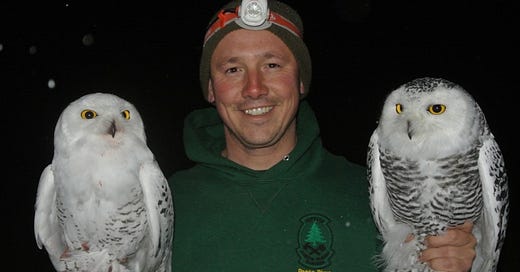



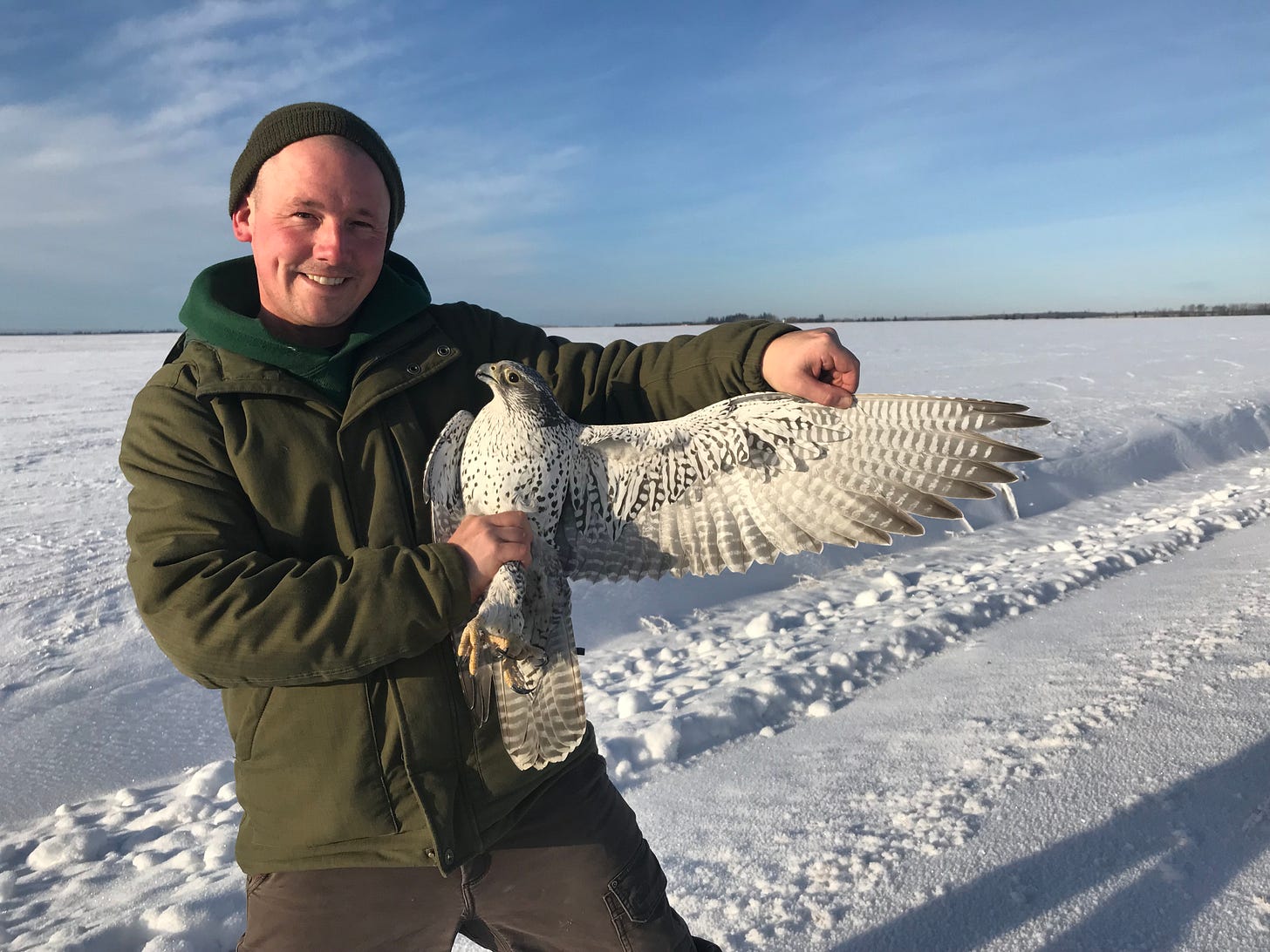
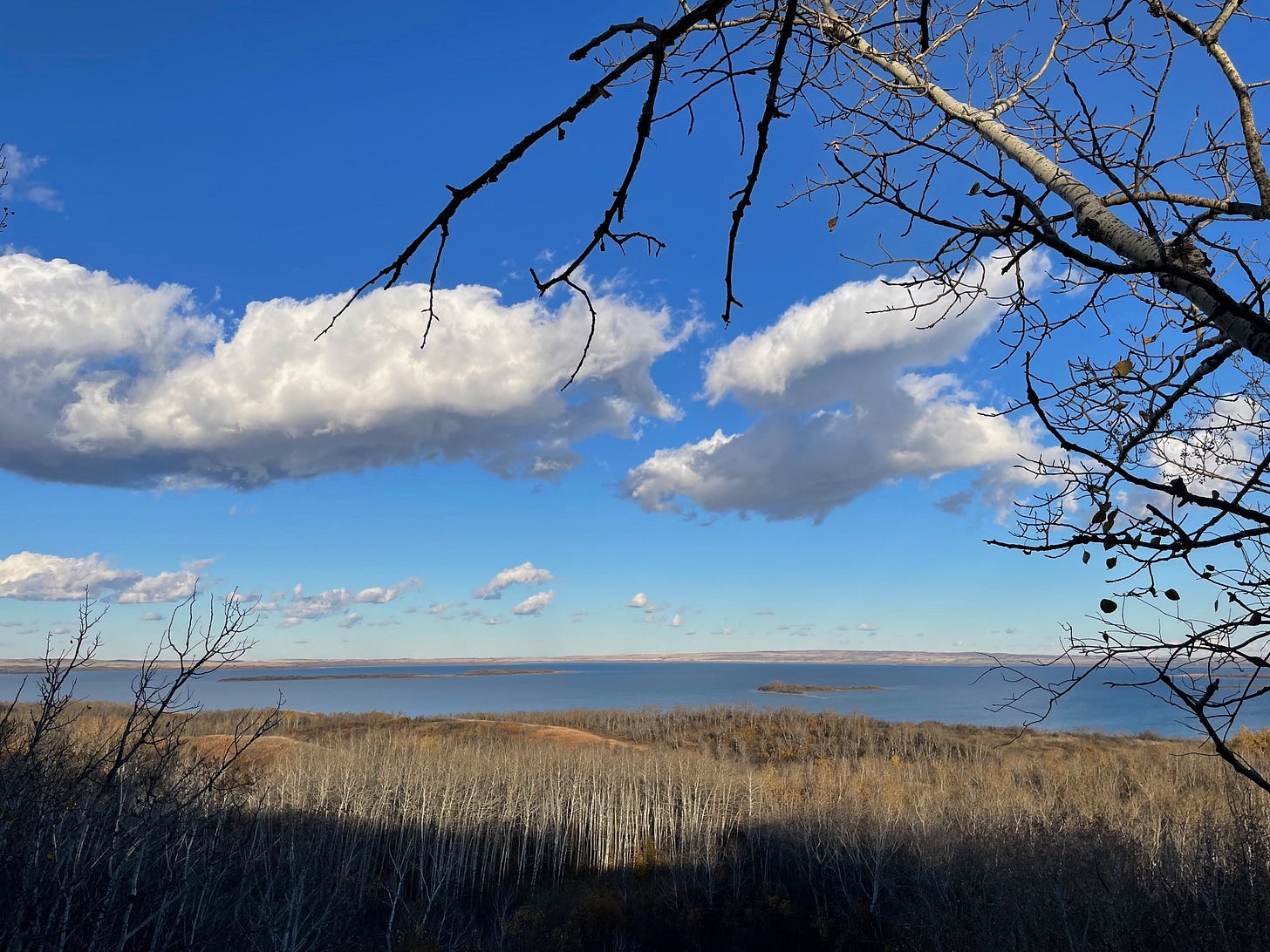
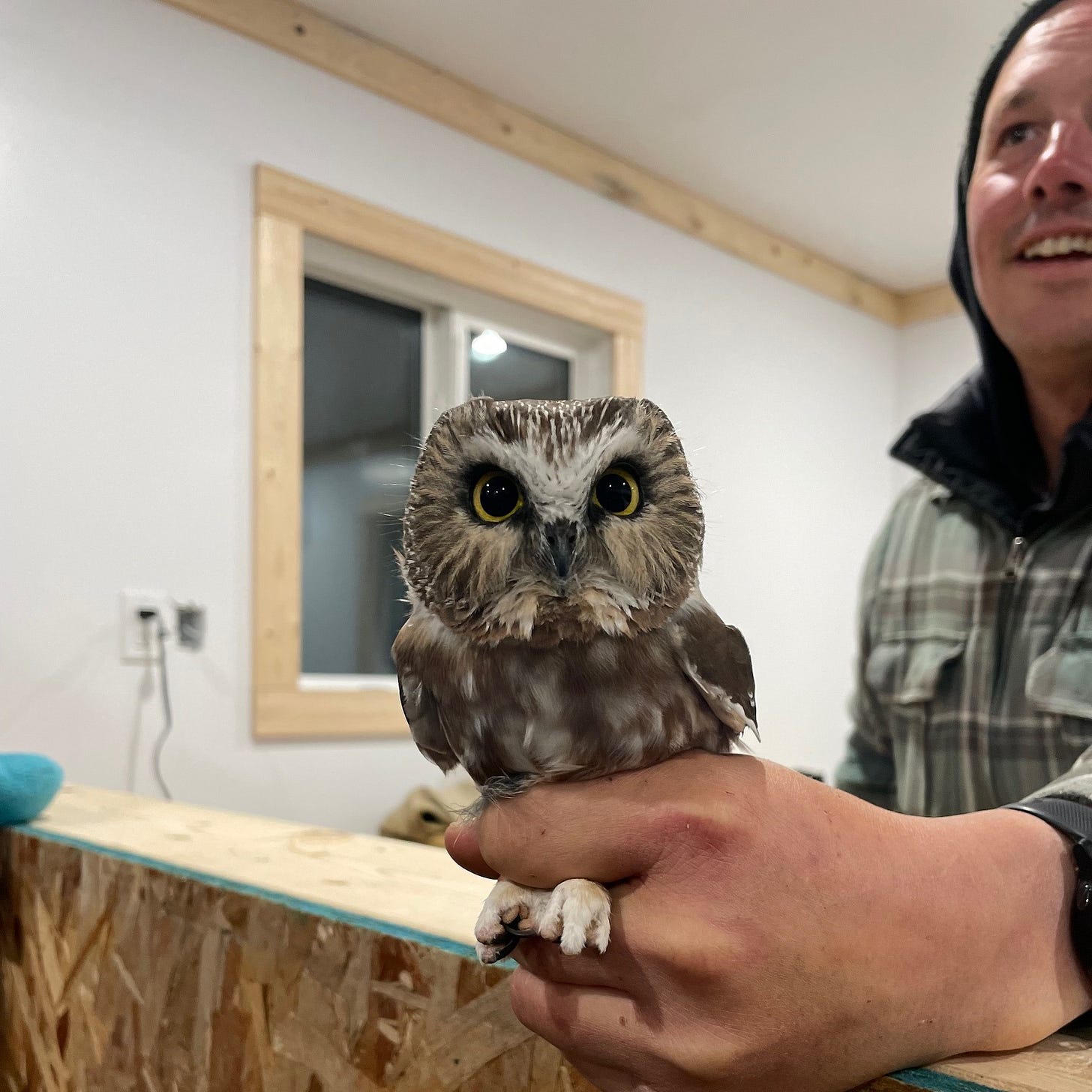
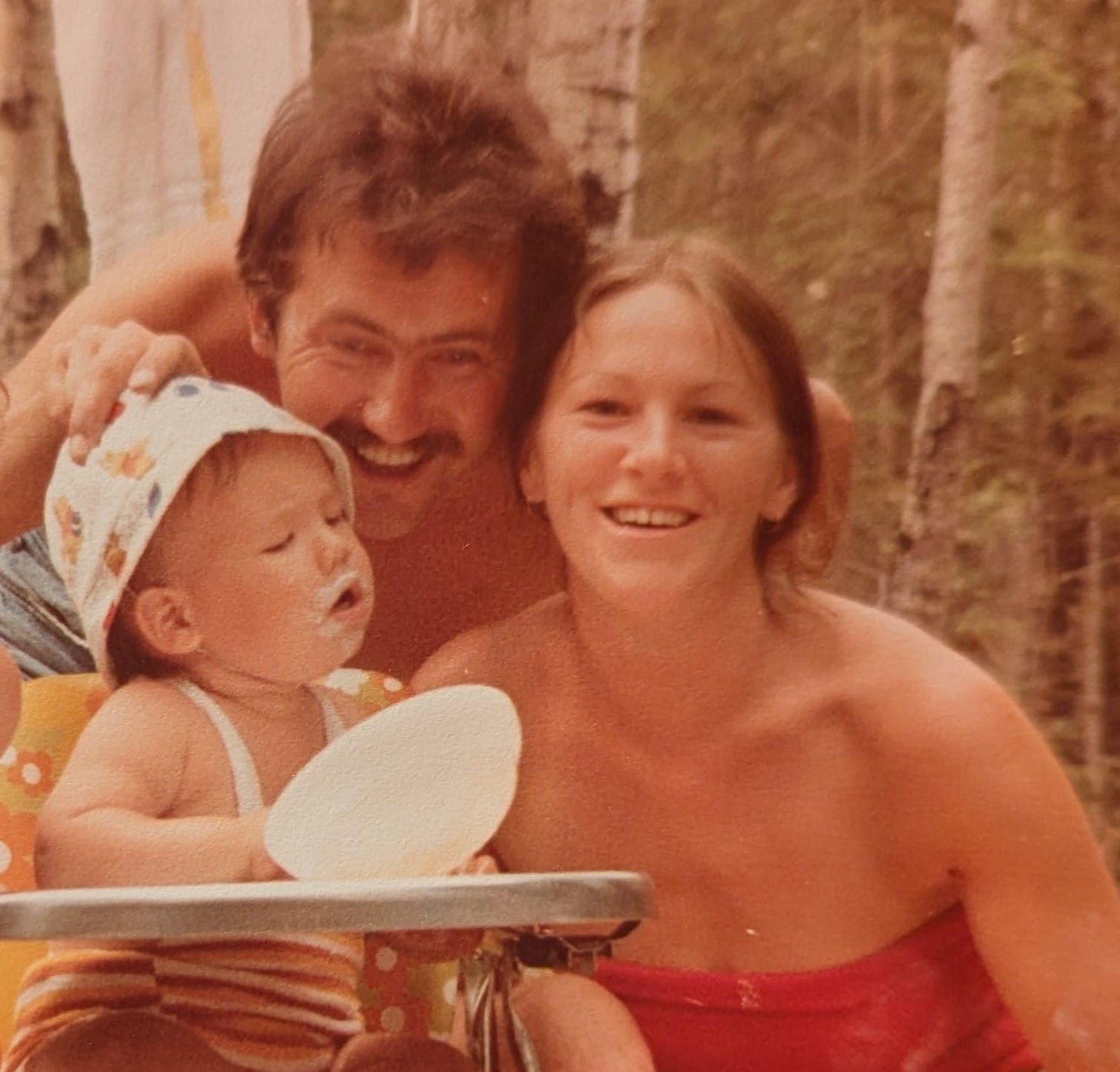
🤍🤍🤍